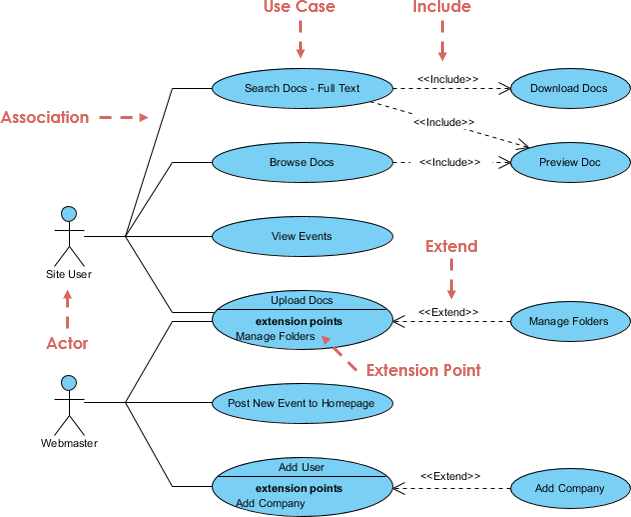Use Case Relationship Types: A Comprehensive Guide for Effective System Design
Introduction:
In the realm of system design and software development, creating a comprehensive blueprint is essential to ensure the seamless functionality of complex applications. Use cases, pivotal in this process, serve as building blocks that define user-system interactions. However, understanding not only what use cases are but also how they interconnect is equally critical. This article delves into the intricate relationships that weave the fabric of use cases, shedding light on their purpose, types, and practical implications.
The Relationship Types of Use Cases
Use cases, in the context of Unified Modeling Language (UML), can be interconnected using various relationships or connectors to represent the flow of interactions and dependencies between them. These relationships help provide a more comprehensive understanding of how different use cases within a system or software application are related and how they collaborate. Let’s explore some of the common types of relationships among use cases:
- Association Relationship: An association relationship is used to show that two or more use cases are related or associated with each other in some way. This relationship doesn’t specify the direction of the interaction but indicates a general association. For example, if two use cases often occur together or share some common elements, you can represent this using an association relationship.
-
Include Relationship: The include relationship indicates that one use case includes another use case. This means that the included use case is a part of the main use case and is essential for its execution. The inclusion relationship is often used to represent shared or reusable functionality. For instance, a “Make Payment” use case might include an “Authenticate User” use case.

- Extend Relationship: The extend relationship represents optional or conditional behavior that can extend the functionality of a base use case under specific conditions. It indicates that an extending use case can add extra behavior to the base use case if certain conditions are met. For example, an “Order Processing” use case might be extended by an “Apply Discount” use case if the user is eligible for a discount.
-
Generalization Relationship: In UML, generalization represents inheritance. When one use case generalizes another, it means that the generalized use case serves as a superclass, and the generalizing use case is a subclass that inherits its behavior. This relationship is often used to show how a more specific use case inherits characteristics from a more general one

- Dependency Relationship: Dependency relationships between use cases indicate that one use case relies on another, but it’s not necessarily a direct association or inclusion. It signifies that a change in one use case may affect another. Dependencies can be used to represent indirect relationships and can be valuable for managing change impact.
Understanding and effectively using these relationships among use cases is crucial for modeling complex systems and applications accurately. These relationships help project teams and stakeholders visualize how different parts of the system interact, collaborate, and depend on each other, contributing to a better overall understanding of system behavior and architecture.
Here’s a summary table of the common types of relationships among use cases, including when to use them:
| Relationship Type | Description | When to Use |
|---|---|---|
| Association | Indicates a general association between use cases. | When two or more use cases are loosely related or associated. |
| Include | Specifies that one use case includes another. | When one use case is essential for the execution of another. |
| Extend | Represents optional or conditional behavior. | When a use case may extend the functionality of another. |
| Generalization | Indicates inheritance between use cases. | When a specific use case inherits behavior from a general one. |
| Dependency | Shows reliance between use cases. | When one use case depends on another indirectly. |
Summary:
Use cases are indispensable tools in system design, offering a holistic view of how users interact with a system or application. To harness their full potential, it’s vital to grasp the relationships that bind them together. This article explores the various types of relationships among use cases, from associations and inclusions to extensions and dependencies. By the end, you’ll have a clearer understanding of how these relationships facilitate seamless communication, collaboration, and the construction of robust systems. Whether you’re a seasoned software developer or a newcomer to the field, understanding use case relationships is an essential step towards mastering the art of system design.

